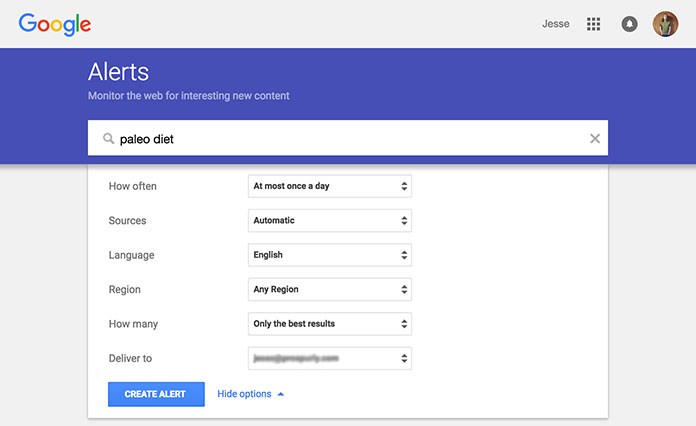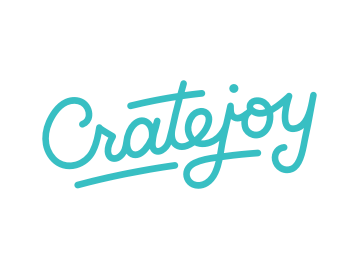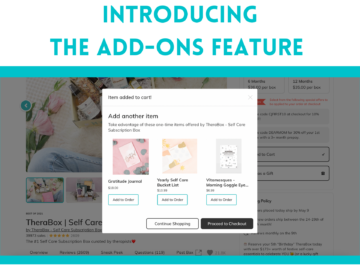In Part 1, we covered the basics behind influencer marketing: what it is, how it works, and how it lends to your overall marketing strategy.
In this part of our series, we’ll lay out the groundwork for how to build your own influencer marketing campaign. First, you’ll need to know what your influencer looks like.
Part 1: Identify Target Influencers
Identifying an influencer that is targeted in your niche is the first step of executing an influencer marketing campaign. A good way to do this is to give yourself a clear understanding of who your customer is and what your target market consists of.
Step 1: Identify Your Audience
- Age: What’s the age range of your target customer? If you need help, look at your Facebook page insights. You can grab demographic info from insights to provide some basis for your assumptions.
- Gender: What’s the gender of your audience? And remember, the purchaser of a product isn’t always the one who uses the product. Who purchases your product, and who uses it?
- Location: Where’s the influencer based? This may have an effect on where their audience is based. No use working with an huge Australian social influencer if your target audience is young American women.
- Platform(s) of Choice: Understanding your customer’s platform goes a long way in deciding the right influencer. An older audience may be more tuned into established bloggers, whereas younger audiences may be more attracted to a platform like Snapchat.
- Interests: Outside of the niche of your product, build a list of interests that define your audience.
Step 2: Reverse-Engineer Your Influencer
Using the information above, build a profile of your target influencer. How old are they? Where do they live? What are their interests?
In doing this, consider the following…
- Reach: This is a measure of eyeballs (e.g. 20 million Instagram followers or 350,000 YouTube subscribers). You’ll need to get better at measuring (and tracking) how much reach is enough, based on generated sales, to justify an ad spend or marketing campaign.
- Niche Compatibility: Look back at your target customer and niche your product serves. Your decision to work with social influencers should directly involve determining how niche-compatible your brand is with the influencer. (This is the “context” we talked about in Part 1.)
- Cultural Compatibility: Here, it’s about evaluating an influencer to ensure they’re an appropriate cultural fit. While they may share context with your brand, an influencer may not be a good fit if there are other aspects of their persona that clash with your own. For example, choosing an “age-appropriate” influencer. Do you want the influencer who travels the globe to discover new bars, or who travels the globe to photograph nature? Both work within a travel niche, but one may be a better fit for your brand.
- Community Compatibility: Furthermore, consider the influencer’s community: what it looks like and who engages with their content. When researching an influencer, read their comments, follow threads about them online, and give yourself a window into how their followers act and think. This helps you do two things: first, to understand if your influencer has the right audience, and second, to work with the influencer to create better, more targeted promotions. The goal is to help the influencer serve their audience with the right content.
Under these considerations, create a picture of your ideal influencer. Give her/him a name, a standard/average reach, and attributes that make them a good product-market fit for your business.
Part 2: Locating & Reaching Out to Your Influencers
With your target influencer in mind, the next step is to get in touch and coordinate reviews.
There are two ways to go about doing this: 1) the approach that uses platforms, agencies and social media coordinators, and 2) the scrappy, DIY approach.
Approach #1: Paid
These solutions offer more automated ways to connect with content creators and influencers. The catch? They cost.
Platforms and Agencies
- Organizers: Organizers are people who may be running something like the DIY approach below, but have built a small business around it. They go by many names, including Blogger Coordinators, Social Media Managers, or Influencer Networkers.
- AspireIQ: Connects creators to brands and agencies who want to leverage content creation on social media.
- Captiv8: A platform to connect brands and influencers in a single marketplace. Also provides a tracking platform where you can get insights on your own audience.
- TapInfluence: Both a platform and agency. Prices start at $2000/year.
- Influence & Co: Helps brands become influencers themselves. They connect brands to media outlets and have brands develop and serve unique and value-driven content, positioning themselves to be influencers. Arguably more for a B2B space.
Approach #2: The DIY Approach
The DIY approach, albeit scrappy, can be equally effective as a paid approach.
Keep in mind: You may still pay when you do it yourself. The money savings here is realized in you identifying and coordinating with influencers vs. someone else doing that footwork for you.
Step #1: Create a CRM or spreadsheet to keep track of leads
As you work through this process, you may gather hundreds of leads. So the first step is to make sure you stay organized! You can use a CRM like Solve360, Hubspot, or Salesforce, or you can opt for a more manual, but affordable solutions, like a Google doc or Excel spreadsheet.
Tips:
- Download our Influencer Spreadsheet template.
- Follow the outline to keep track of influencers you identify. Consider using separate sheets for different platforms, like Instagram, YouTube, and Twitter.
Step #2: Seek out your target influencers
You can find targeted influencers a number of ways, such as…
Online articles: Searching for “top [niche] bloggers” or “top [niche] Instagrams” can provide hundreds of curated lists by bloggers. Here are some examples:
- Stylecaster’s 50 All-Time Favorite Beauty Blogs
- Top 100 Natural Health Blogs by the Institute for the Psychology of Eating
- The Fashion Spot’s 25 Fashion Blogs to Follow in 2018
Hashtags: The best hashtags to use to find suitable influencers with will quickly become clear to you in your searching during Part 1. How so? Look at the hashtags they use!
Our tips:
- Identify 4-6 key hashtags.
- Using a tool like Hootsuite, save searches and organize them by hashtag.
- Instagram includes a popular section, as well as related hashtags and recent posts. Use this to target the most popular users who use your hashtag.
Google Alerts: Consider setting up a Google Alert for keywords associated with your niche. When an alert is sent to your inbox, you’ll be able to look at the source and determine if they’re an influencer who would work with your brand.
 Similar brands: Know of some similar brands to your own? You can check out their pages and search for mentions about them to identify influencers who you know have direct experience working with brands in your niche. You can also consider reaching out to those brands to ask how the experience went.
Similar brands: Know of some similar brands to your own? You can check out their pages and search for mentions about them to identify influencers who you know have direct experience working with brands in your niche. You can also consider reaching out to those brands to ask how the experience went.
Blogger Targeting: Bloggers are a great type of influencer – not only do they exert influence, but they also produce written content around your brand, which is (arguably) more beneficial than just an Instagram or Twitter mention. Finding the right bloggers, though, can take time. Luckily, there are a handful of tools you can use to do so.
- Small or just starting out? Use Inkybee or BlogDash.
- Established and working with a good budget? Use GroupHigh or BuzzStream.
Step #3: Reach out!
Now that you’ve found your influencers, you need to engage with them. When you do this, tailor each pitch and partnership to that influencer’s community. The best campaigns will be those that encourage authentic content creation that resonates with the influencer’s audience.
Here’s a template to start:
Hi [Name],
My name is ______ and I work with [Company], a subscription box for [niche]. We are huge fans of your [channel/blog/Instagram/etc] and we would love to send you a box in exchange for review or shoutout on your social media. Let me know if you’d be interested in chatting more about this!
Thanks,
[your name]
Keep some things in mind when using this template:
- It’s bare bones. Customize it as much as needed.
- Be specific about what you’re sending in exchange for their work, and about what they need to get back to you.
- Incentivize them with other perks, like giveaways or special discounts for their audience
- Make sure you agree on how you can use the content. Ask if you’re able to repost, reuse, and remarket any content they create for you.
- Consider just sending a free product without asking for anything in return. Sometimes this works just as well, or better, than initially soliciting them for a review.
- Consider how you can share promotions with them. Maybe the two of you can partner for a guest post, a shoutout in your newsletter, or something else.
Step #4: Pay Up
By “pay up,” we don’t necessarily mean financially. There are several ways to compensate an influencer for their work promoting your brand/products, and many are totally free. Check out our roundup below.
Shoutouts/Reposts: The most cost-effective way to compensate a partner is to repost and promote their content. Give them photo credit by tagging them and linking to their posts about your product if it’s on a blog:
Free Box: Another easy way to compensate reviewers is to give them the product for free. This might be part of your initial pitch, but if you haven’t considered it, it’s a great way to show appreciation of the blogger reviewing your product.
Cash Comp: Paying a cash compensation to influencers is probably the most appealing option (for them). Rates will vary widely.
- Determine if a rate is required before you send a product for review.
- Consider reach. Most people with below 50k followers on Instagram, for example, work with product trades rather than being paid. If you’re getting an expensive quote from someone small, proceed with caution or consider ways to test how well their audience would respond to the idea.
Referral Dollars: Referral dollars deal with cash payouts as well. In this paradigm, the influencer gets a bounty on each person who signs up.
- Affiliate dollars usually start around $5/customer.
- Combine cash and referral dollars for a complete package. You can deposit a dollar amount down against a bounty. For example, if you provide a $200 deposit, then $10 per commission, that influencer must get at least 20 customers before they get paid anything after $200.
Step #5: Keep the Relationship Warm
After the content has been shared, be sure to maintain connection with your influencers!
- Stay Engaged: Make a point to revisit their profiles, like photos, and leave comments!
- Repost Occasionally: You can continuously repost their content over time and tag them to keep you at the top of their mind.
- Re-partner every few months (if #6 in this list checks out!).
Sidenote: It’s critical to engage with the people who like or comment on your influencer’s posts. Make a point to follow them, reply to comments and engage with people who engage with the influencer’s content.
Step #6: Review and Tailor your Strategy and Contacts
Crucially, you need to track and monitor each campaign to really underline the cash value it provides. Fortunately, there’s a super easy way to do this: custom-tracking URLs from Google Analytics, which you can see directly in your Google Analytics Dashboard.
Here’s how you set that up:
- Create a custom UTM for each campaign. UTM stands for “Urchin tracking module” – essentially, this means a link that you modify to include tracking information. So if you’d like to link to a certain webpage from a particular marketing email, for example, you can alter that pagelink to specify what email client you used and what audience you sent the email to.
- Monitor these UTM results in Google Analytics, under Acquisitions > Campaigns. They will appear on this list with the name you chose when you created each UTM.
- Make sure you set up Goals in Google Analytics, so you can track how much revenue each campaign contributes in sales.
Working with Social Influencers to Grow Your Business
With tools and tips in hand, take some time to build out your own influencer marketing campaign – whether it’s a paid campaign or DIY campaign.
What has worked for you with influencer marketing? Tell us in the comments below.






